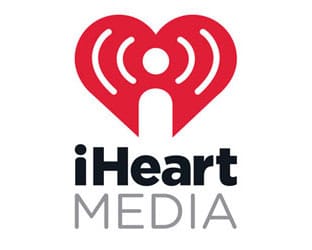As Nielsen began its radio ratings survey Thursday in 51 US markets, the company announced that its pilot survey conducted in Lexington, KY in December proved that sticker diaries work in the US and it also claimed that its address-based recruiting methodology delivered 30% more of the potential radio universe than any of its competitors. Nielsen found that more than 20% of people over age 12 in Lexington use cell phones only – and that cell phone only participants listened to more radio than those from homes with landlines.
By using the address-based recruiting system, Lorraine Hadfield, Nielsen’s Managing Director for Global Radio Audience Manager, told RBR/TVBR that Nielsen is able to identify 98% of the households in a market, versus 66% for methodologies using listed landlines only, which she said “had not really been tracking true listenership in this country.”
“This is one market, but what we can see from this market is that those people who are cell phone-only listen to more radio than the average,” Hadfield said of the findings from the Lexington test. Nielsen found that cell phone-only homes logged nearly 23 hours of radio listening per week compared to just over 19 hours for the total sample. In addition, this group: Listens to 3.5 radio stations compared to less than 3 stations among the total sample; Has an average quarter hour total radio rating of 17.3% versus 14.3% rating for the total sample; and Skews younger, primarily between the ages of 18 and 34.
Station level data is not being disclosed from the Lexington test, which ran only one week. “We’ve looked at the station level data, we’ve looked at format level data, and it’s highly consistent with expectations,” Hadfield said.
The Spring 2009 survey which began yesterday in 51 US markets will run eight weeks, with some 88,000 people participating. Nielsen has been touting the value of large samples in promoting the new service. Cumulus Media, which recruited Nielsen to measure US radio, is subscribing in all 51 markets and Clear Channel in the 17 where it has stations.
“The results of this study show clearly that radio has a vital role to play and that a new approach to measuring radio’s audience was required to fully represent the medium’s value. The findings from the Nielsen pilot underscore the urgent need to include cell-phone-only homes in radio ratings,” said Cumulus CEO Lew Dickey.
“Finally! An accurate picture of radio listening,” said John Hogan, President and CEO of Clear Channel Radio. “It’s no surprise to us that the most highly coveted demographic listens to 23 hours of radio per week – that’s a far cry from what we’ve been told for years by inaccurate ratings. The fact that more than 20% of radio listeners in the test market are cell-phone-only households underscores the value that Nielsen brings to us and every other radio broadcaster right out of the gate. We applaud Nielsen’s commitment to delivering accurate information immediately. Now we can get to the business of discussing radio’s true value with advertisers,” he said in a comment distributed by Nielsen.
Hadfield said Nielsen’s plan is to normally deliver ratings data about a month after the survey is completed. However, since the online delivery software is still being developed, the Spring 2009 survey will be released in mid-August.
In addition to listening data, Nielsen is gathering qualitative information in all 51 markets. Hadfield was pleased with the qualitative side of the Lexington experiment, where 97.3% of the 588 diary-keepers filled out the qualitative survey at the back of the sticker diary. “What we found was that we were able to go beyond just demographics to profile what we call ‘biographics’,” Hadfield said, citing such examples as identifying people who listen to radio but don’t read a newspaper, and what percentage of people who listen to the radio go to see a movie in that week.
RBR/TVBR observation: One of the more interesting findings was that people still noted listening to stations when no sticker was provided. Nielsen provided stickers for 35 stations in the Lexington market, but participants also wrote down listening to another 35 stations. As a result, Nielsen is providing stickers for not only home to metro stations, but some out of market ones as well. Hadfield told us the average for the 51 markets is that diary-keepers will have printed stickers for 50 stations.




